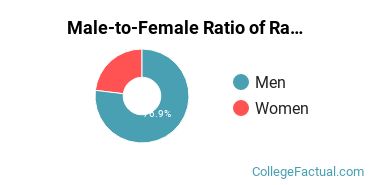 by our College Data Analytics Team
by our College Data Analytics TeamRadiologic Technology is a concentration offered under the allied health professions major at Colorado State University - Fort Collins. We’ve pulled together some essential information you should know about the master’s degree program in radiography, including how many students graduate each year, the ethnic diversity of these students, and more.
If there’s something special you’re looking for, you can use one of the links below to find it:
Learn about start dates, transferring credits, availability of financial aid, and more by contacting the universities below.
Take your associate degree in an allied health field to the next level with this specialized transfer friendly online bachelor of science from Southern New Hampshire University.
During the 2019-2020 academic year, part-time graduate students at Colorado State paid an average of $1,433 per credit hour if they came to the school from out-of-state. In-state students paid a discounted rate of $584 per credit hour. The average full-time tuition and fees for graduate students are shown in the table below.
| In State | Out of State | |
|---|---|---|
| Tuition | $10,520 | $25,791 |
| Fees | $2,264 | $2,264 |
Online degrees for the Colorado State radiography master’s degree program are not available at this time. To see if the school offers distance learning options in other areas, visit the Colorado State Online Learning page.
Women made up around 14.3% of the radiography students who took home a master’s degree in 2019-2020. This is less than the nationwide number of 60.0%.

Of those graduates who received a master’s degree in radiography at Colorado State in 2019-2020, 14.3% were racial-ethnic minorities*. This is lower than the nationwide number of 20%.

| Race/Ethnicity | Number of Students |
|---|---|
| Asian | 0 |
| Black or African American | 0 |
| Hispanic or Latino | 0 |
| Native American or Alaska Native | 0 |
| Native Hawaiian or Pacific Islander | 0 |
| White | 3 |
| International Students | 0 |
| Other Races/Ethnicities | 4 |
*The racial-ethnic minorities count is calculated by taking the total number of students and subtracting white students, international students, and students whose race/ethnicity was unknown. This number is then divided by the total number of students at the school to obtain the racial-ethnic minorities percentage.
More about our data sources and methodologies.